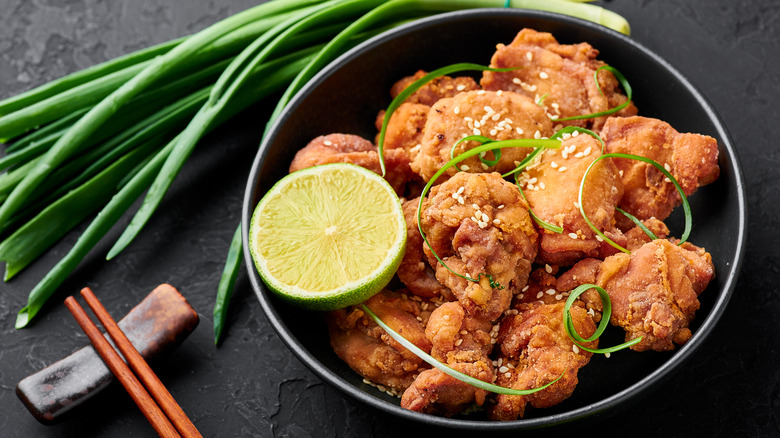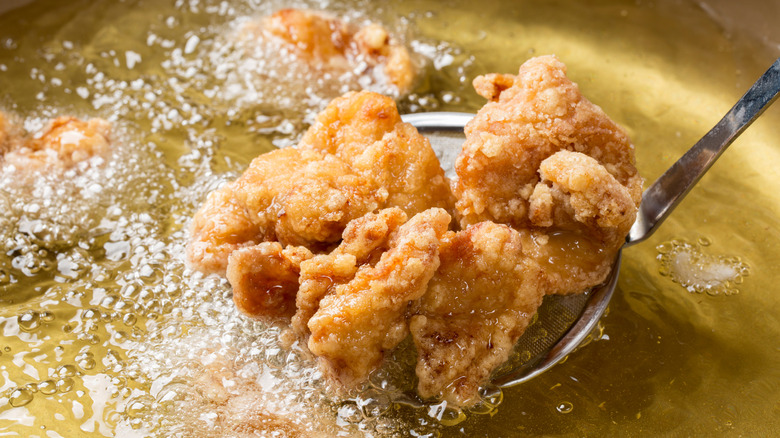What Makes Karaage Fried Chicken So Unique?
Known for its cherry blossoms, anime culture, and scenic beauty, Japan embodies a futuristic sense of wonder while staying true to its traditional roots — which are primarily found in its cuisine. Head on over to a sushi spot and you'll be treated to light and delicate fish flavors that only need a touch of soy sauce for umami flavoring. But across the street, there might be several ramen shops, where chewy noodles, soft-boiled eggs, and crunchy veggies soak in a fatty, protein-based broth.
Or, perhaps you're walking past food stalls that swarm the streets of Japan. The scent of fried foods is intoxicating, but it's certainly not your standard KFC fare. Is it gourmet tempura? Tonkatsu? No, it's quite possibly even more tender and crispier. It's karaage fried chicken.
These small bites of Japanese fried chicken are typically boneless and can be found in restaurants, bento shops, and izakayas (Japanese bars), per Japanese food blog Just One Cookbook. But what exactly is karaage fried chicken and what makes it so unique?
It utilizes the karaage technique
Just One Cookbook explains that the karaage technique can be applied to a variety of vegetables and proteins, such as fish, and involves deep-frying foods that have been drenched in flour or another type of starch, like rice flour or potato starch. With regards to chicken, it's most often marinated in a mix of soy sauce, ginger, and sake, but other ingredients like mirin, sesame oil, and egg yolks may be added as well.
Thrillist states that the intense flavor and soft crunch make karaage fried chicken stand out from its competition. It's also easy to snack on, as each chunk of chicken resembles a small nugget that can be eaten in one or two bites.
Karaage chicken can certainly be eaten on its own, but food blog Sugar Salt Magic suggests a few tasty pairings such as rice, pink pickled onions, togarashi seasoning, and a drizzle of Kewpie mayonnaise on top. Fortunately, you can make karaage chicken at home to enjoy the unique tastes and old traditions of Japanese cuisine.

